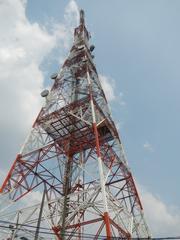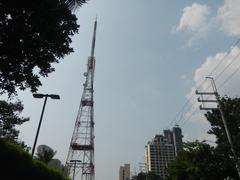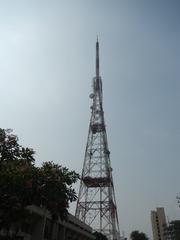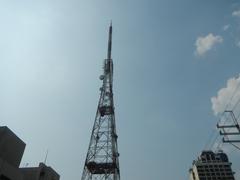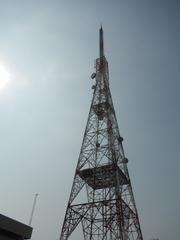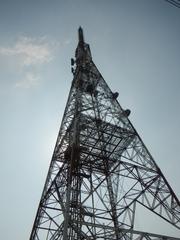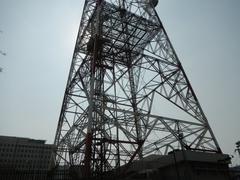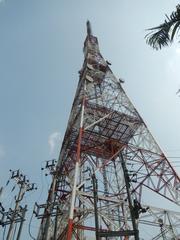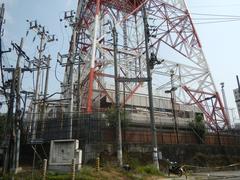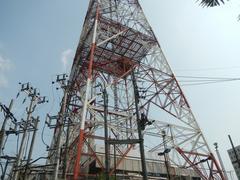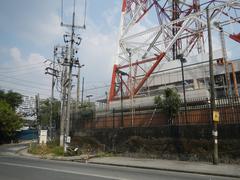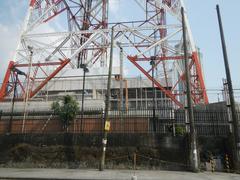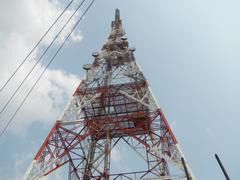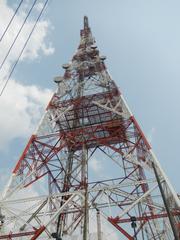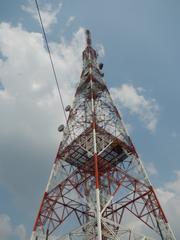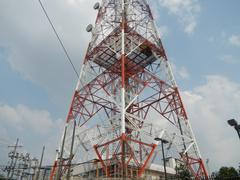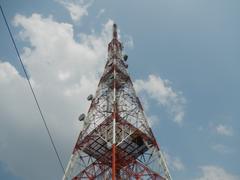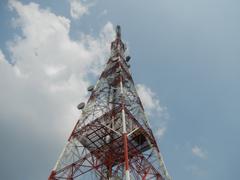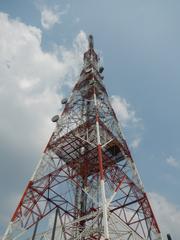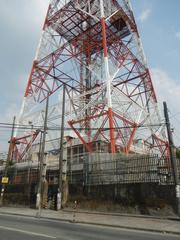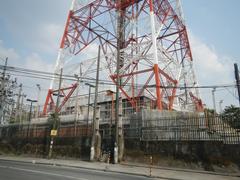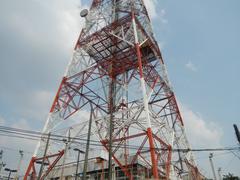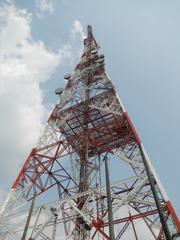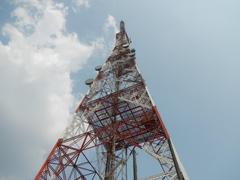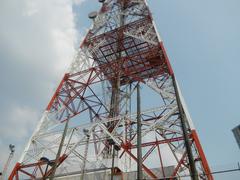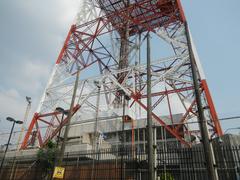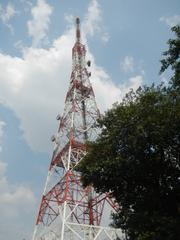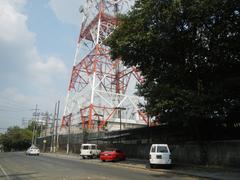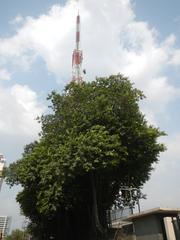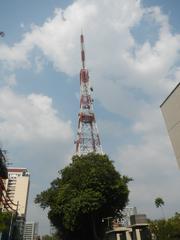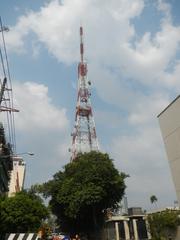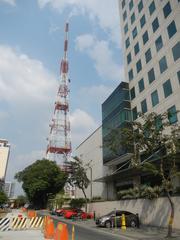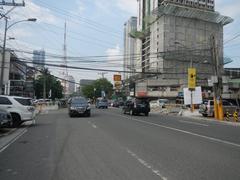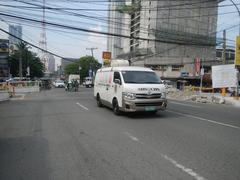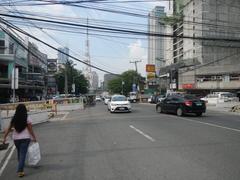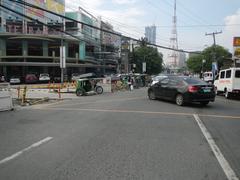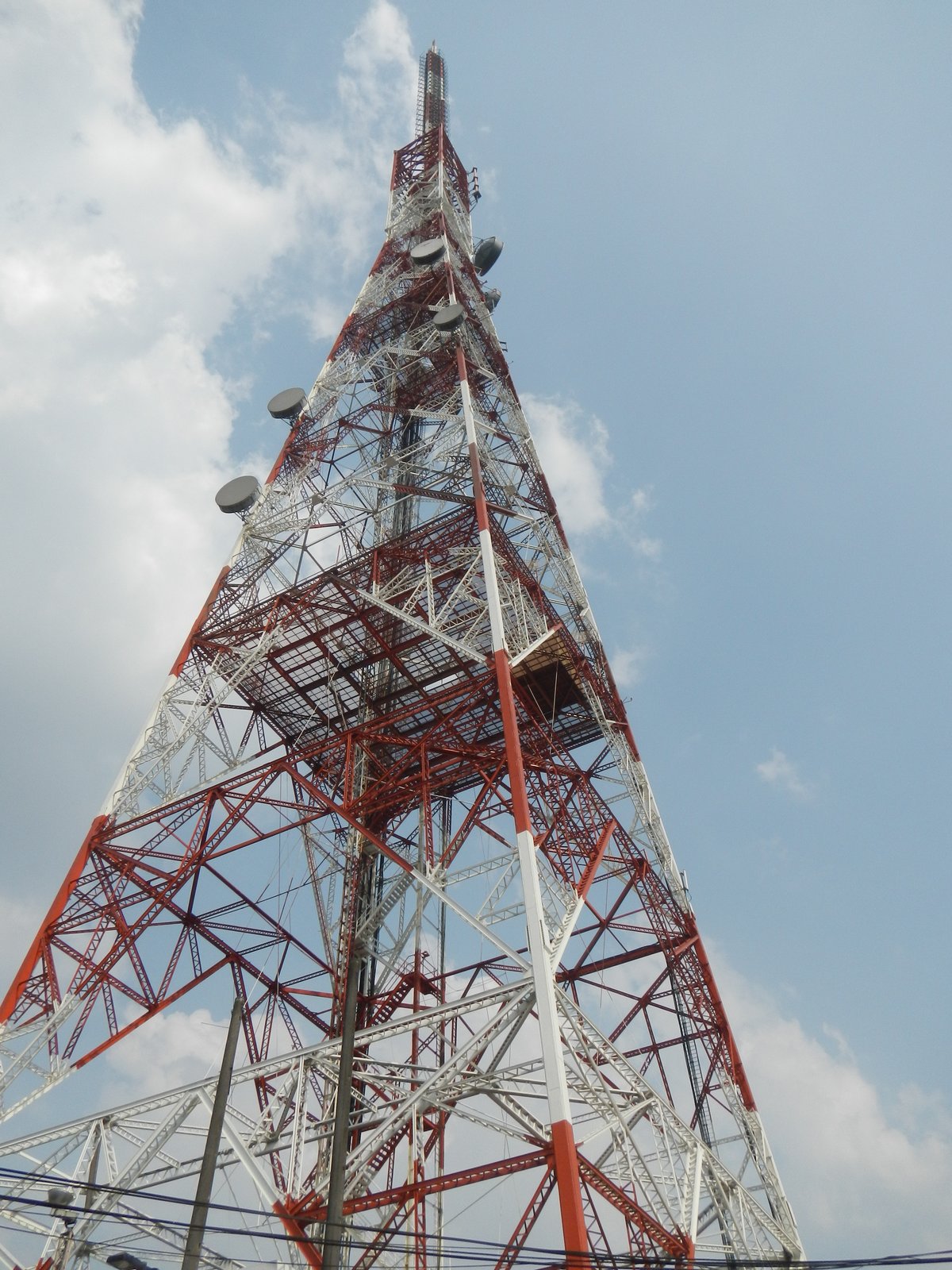
Millennium Transmitter Metro Manila: Visiting Hours, History, Tickets & Travel Tips
Date: 15/06/2025
Introduction
The Millennium Transmitter, rising prominently from the ABS-CBN Broadcasting Center in Quezon City, is one of Metro Manila’s most enduring and recognizable landmarks. More than just a feat of engineering, the transmitter is intertwined with Philippine media history, technological progress, and the evolving landscape of press freedom. This guide offers a comprehensive overview of the Millennium Transmitter—covering its origins, architectural and technological features, cultural significance, recent developments, and practical information for visitors seeking to connect with Quezon City’s rich broadcasting heritage.
Table of Contents
- Origins and Construction
- Role in Philippine Broadcasting History
- Technological Evolution and Upgrades
- Symbolic and Cultural Significance
- Recent Developments and the Future
- Preservation and Heritage Considerations
- Impact on Quezon City’s Urban Landscape
- Visitor Information: Viewing, Accessibility, and Tips
- Nearby Attractions
- FAQs
- Conclusion and Recommendations
- References and Further Reading
Origins and Construction
Completed in 1969, the Millennium Transmitter was conceptualized during a transformative era for Philippine media. ABS-CBN, aiming to become the nation’s premier broadcasting network, commissioned the tower as the backbone of its expanding radio and television reach. Its strategic location in Quezon City—then blossoming as a governmental, commercial, and cultural center—ensured broadcast signals could travel across Luzon and into the archipelago.
Originally standing at 650 feet (198.1 meters), the transmitter was among the tallest lattice towers globally at the time. Its robust steel lattice design provided the resilience needed to withstand the Philippines’ frequent typhoons and earthquakes, while also supporting evolving antenna systems (Wikiwand; LionheartV, 2025).
Role in Philippine Broadcasting History
From its very first transmission, the Millennium Transmitter played a pivotal role in shaping Filipino society. It delivered news, entertainment, and public service programs into millions of homes, significantly influencing public opinion and collective memory.
The tower’s story is closely tied to periods of political upheaval. During Martial Law (1972–1981), ABS-CBN was shuttered and the transmitter was seized by the government, becoming a tool for state-run media. After the 1986 EDSA People Power Revolution, the transmitter was returned to ABS-CBN, symbolizing the restoration of democracy and press freedom (LionheartV, 2025).
Technological Evolution and Upgrades
The Millennium Transmitter has consistently adapted to advancements in broadcasting technology:
- 1970s–1980s: Supported VHF analog television and AM/FM radio, laying the foundation for mass media access in Metro Manila and adjacent provinces.
- 1990s: Upgraded for UHF channels, expanding programming options and improving signal clarity.
- 2000s: Transitioned to digital with ISDB-T technology, reflecting the Philippines’ shift to digital TV.
- 2009 Renovation: Tower height increased to 720 feet (219.5 meters), original cylinder antennas replaced with modern dipole antennas with reflectors—ensuring digital readiness and greater broadcast capacity.
- 2010s–2020s: Enabled high-definition (HD) and digital terrestrial television (DTT), supporting services like ABS-CBN TVplus, interactive broadcasts, and emergency warnings (HandWiki; LionheartV, 2025).
Symbolic and Cultural Significance
Beyond its technical value, the Millennium Transmitter is a symbol of Filipino identity and media innovation. Its illuminated silhouette is a familiar sight in Quezon City, evoking nostalgia for classic TV shows, national events, and moments of unity.
The transmitter became a powerful emblem during the 2020 ABS-CBN shutdown, as advocates rallied for press freedom and independent journalism. Its presence continues to inspire discussions on the role of media in Philippine democracy (LionheartV, 2025).
Recent Developments and the Future
In March 2025, ABS-CBN announced the sale of its historic Broadcast Center—including the Millennium Transmitter—to Ayala Land. ABS-CBN retained the ELJ Communications Center, but the future of the transmitter itself is under review, with demolition and urban redevelopment being considered (LionheartV, 2025). Advanced Media Broadcasting System (AMBS) now operates broadcasts from the tower, including ALLTV, reflecting ongoing transitions in the Philippine media sector.
Preservation and Heritage Considerations
The transmitter’s fate has prompted calls from cultural advocates and former ABS-CBN staff for its preservation as a monument to media excellence, press freedom, and the city’s history. The Quezon City Tourism Department is exploring ways to integrate the site’s legacy into broader heritage and tourism initiatives.
Impact on Quezon City’s Urban Landscape
As a towering feature of Quezon City’s skyline, the Millennium Transmitter complements other landmarks such as the Dolphy Theater and the ELJ Communications Center. It underscores Quezon City’s status as a media and innovation hub and serves as a visual anchor for locals and visitors alike (DBpedia).
Visitor Information: Viewing, Accessibility, and Tips
Can You Visit the Millennium Transmitter?
Internal tours are not available. The transmitter is a secure, operational broadcast facility, and public access to the grounds is restricted. However, the tower is visible from several public vantage points.
Best Viewing Spots
- Mother Ignacia Street and Sgt. Esguerra Avenue: Both offer clear views of the transmitter, especially at sunrise and sunset for photography.
- Nearby Rooftop Venues: With permission, nearby establishments may offer elevated perspectives.
- Night Viewing: The transmitter’s illumination makes it particularly photogenic after dark.
Directions & Accessibility
- Public Transport: MRT-3 (Quezon Avenue Station) is a 10–15 minute walk. Jeepneys, buses, and ride-sharing services provide easy access.
- Parking: Limited in the immediate area. Nearby malls like Trinoma and SM North EDSA offer paid parking.
- For Persons with Disabilities: Sidewalks are generally accessible, but may have uneven surfaces.
Safety
Quezon City is a busy area—exercise usual precautions, especially after dark. The vicinity is generally safe during daylight hours due to high pedestrian traffic.
Nearby Attractions
Enhance your visit by exploring these Quezon City locations:
- 11th World Scout Jamboree Memorial Rotonda: ~7-minute walk; a peaceful memorial.
- Bantayog ng mga Bayani Center: ~8-minute walk; a museum honoring democracy heroes.
- Tomas Morato Avenue: ~17-minute walk; popular for dining and nightlife.
- SM City North EDSA & Trinoma Mall: ~10–15 minutes by car; major shopping centers.
- Quezon Memorial Circle: ~15 minutes by car; a national monument and park.
FAQs
Can I tour the Millennium Transmitter?
No, it is not open for public tours, but can be viewed from nearby public streets.
Is there an entrance fee to view the tower?
No fee is required to view or photograph the transmitter from public spaces.
Are there guided tours or special events?
None are currently available for the transmitter itself.
What is the best time for photos?
Early morning, late afternoon, and nighttime for the illuminated view.
Is drone photography allowed?
Only with prior permission from local authorities and property owners.
Conclusion and Recommendations
The Millennium Transmitter stands as a testament to the dynamism and resilience of Philippine broadcasting. Though internal access is restricted, its iconic profile and historical significance make it a must-see for those exploring Quezon City’s media heritage. Pair your visit with nearby cultural and historical attractions for a deeper appreciation of the area’s unique role in shaping Filipino identity and media freedom.
For the latest visitor tips, curated guides, and interactive maps, consider downloading the Audiala app or following local tourism and heritage platforms.
References and Further Reading
- Millennium Transmitter in Quezon City: Visiting Hours, History, and What to See, 2025, LionheartV
- Millennium Transmitter in Quezon City: Architecture, Broadcast History, and Future Prospects, 2025, LionheartV
- Millennium Transmitter: History, Cultural Significance, and Broadcasting Legacy in Quezon City, 2025, LionheartV
- Millennium Transmitter Visiting Hours, Tickets, History, and Nearby Attractions in Quezon City, 2025, LionheartV
- Quezon City Tourism Department
- Wikiwand: Millennium Transmitter
- HandWiki: Millennium Transmitter
- DXS Fandom: Millennium Transmitter
- DBpedia: Millennium Transmitter
